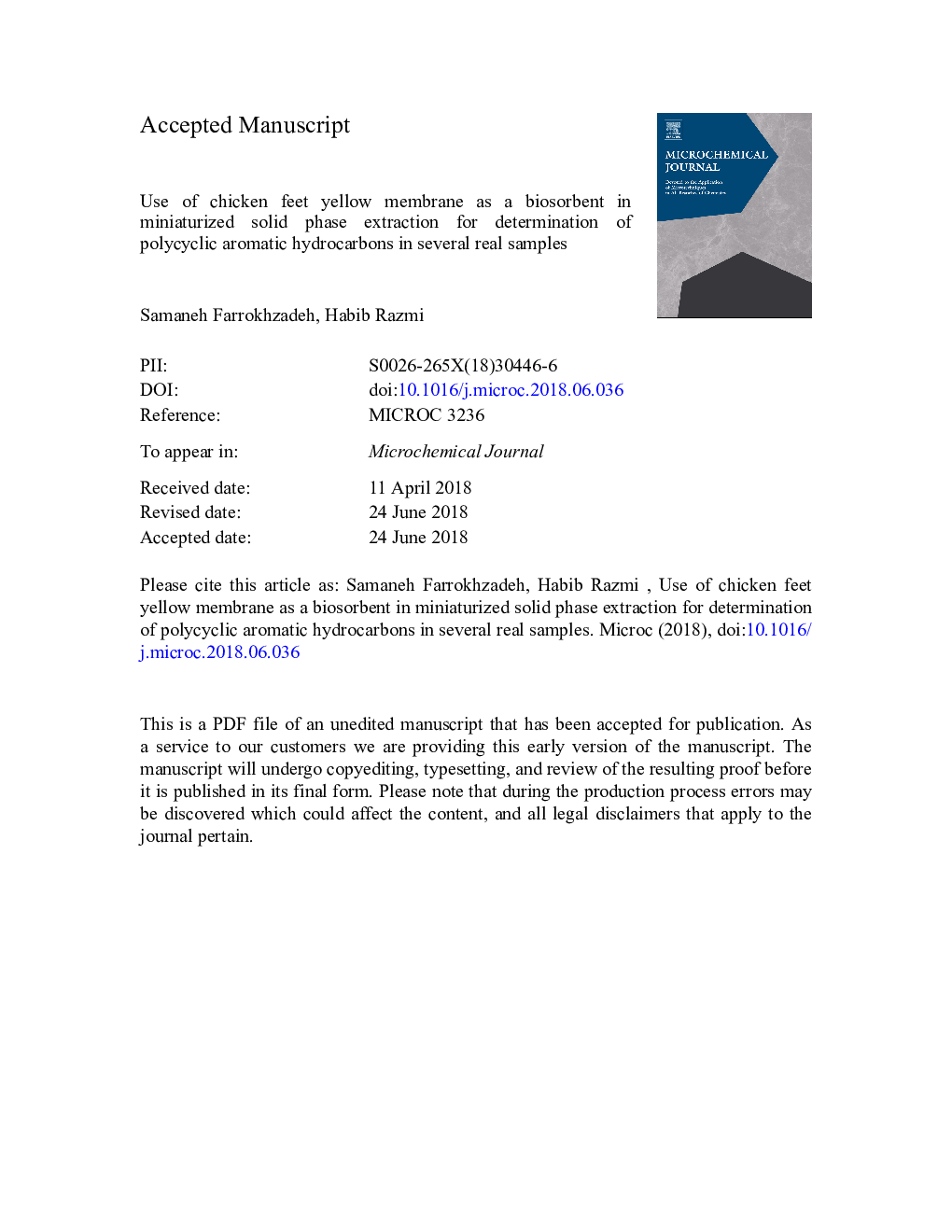| Article ID | Journal | Published Year | Pages | File Type |
|---|---|---|---|---|
| 7640532 | Microchemical Journal | 2018 | 34 Pages |
Abstract
In this study, chicken feet yellow membrane was treated and evaluated as a novel bio-sorbent for miniaturized solid-phase extraction of organic pollutants and determination by high performance liquid chromatography for the first time. The surface of bio-sorbent particles was characterized by scanning electron microscopy, Fourier transform infrared spectroscopy, X-ray diffraction and Brunauer, Emmett and Teller techniques. As-prepared bio-sorbent showed excellent potential for preconcentration of polycyclic aromatic hydrocarbons (PAHs) as a model of organic pollutants. The effective experimental parameters on the extraction efficiency were optimized by one-factor-at-a-time method. Under the optimized experimental conditions, linear dynamic ranges were achieved in the range of 0.1-400.0â¯Î¼gâ¯Lâ1 for Naphtalene, 0.005-40.0â¯Î¼gâ¯Lâ1 for Phenanthrene, 0.001-20.0â¯Î¼gâ¯Lâ1 for Antracene, 0.008-132.0â¯Î¼gâ¯Lâ1 for Fluoranthene and 0.012-100.0â¯Î¼gâ¯Lâ1 for Pyrene, with correlation coefficient ranging from 0.996 to 0.999. The limits of detection for PAHs varied between 0.37 and 38.5â¯ngâ¯Lâ1 and RSD values were obtained in the range of 2.7-5.4% (nâ¯=â¯8). The applicability of the method was demonstrated by analyzing the target pollutants in agricultural products, edible vegetable oils, and water samples. Due to low cost, availability, environmentally friendly, reusability and good pre-concentration factors, the developed bio-sorbent could be effectively used for the determination of PAHs in environmental samples.
Keywords
Related Topics
Physical Sciences and Engineering
Chemistry
Analytical Chemistry
Authors
Samaneh Farrokhzadeh, Habib Razmi,
